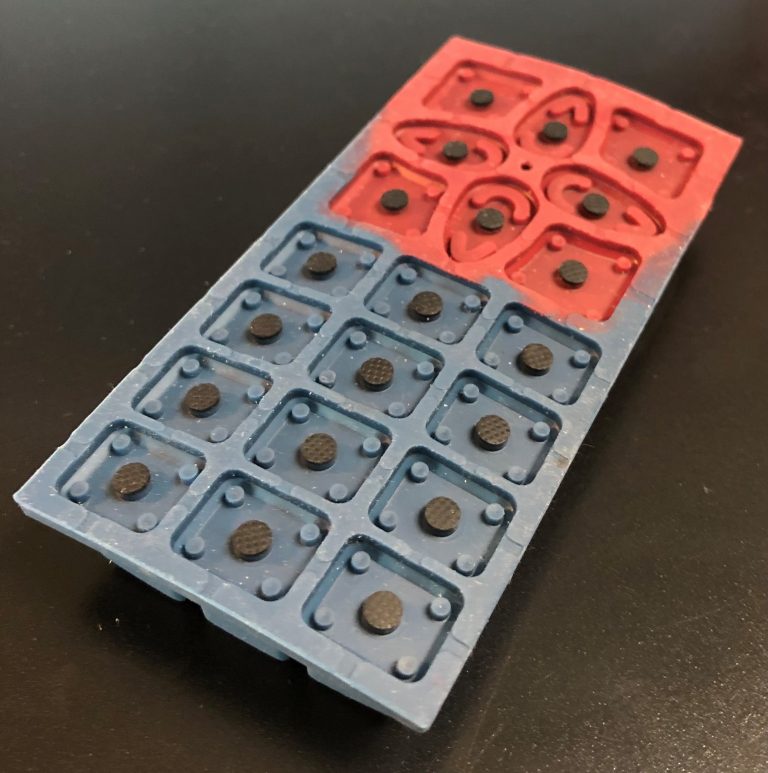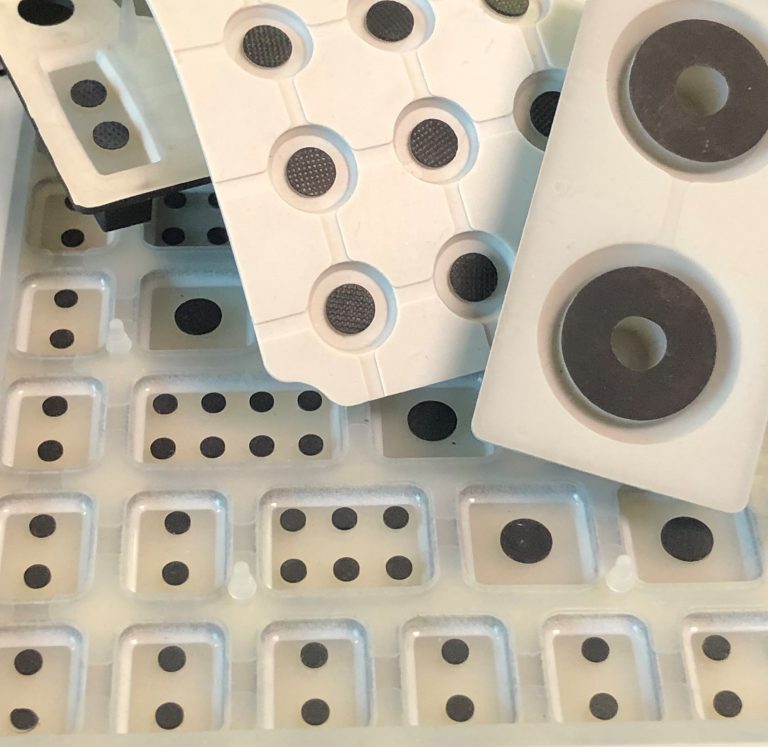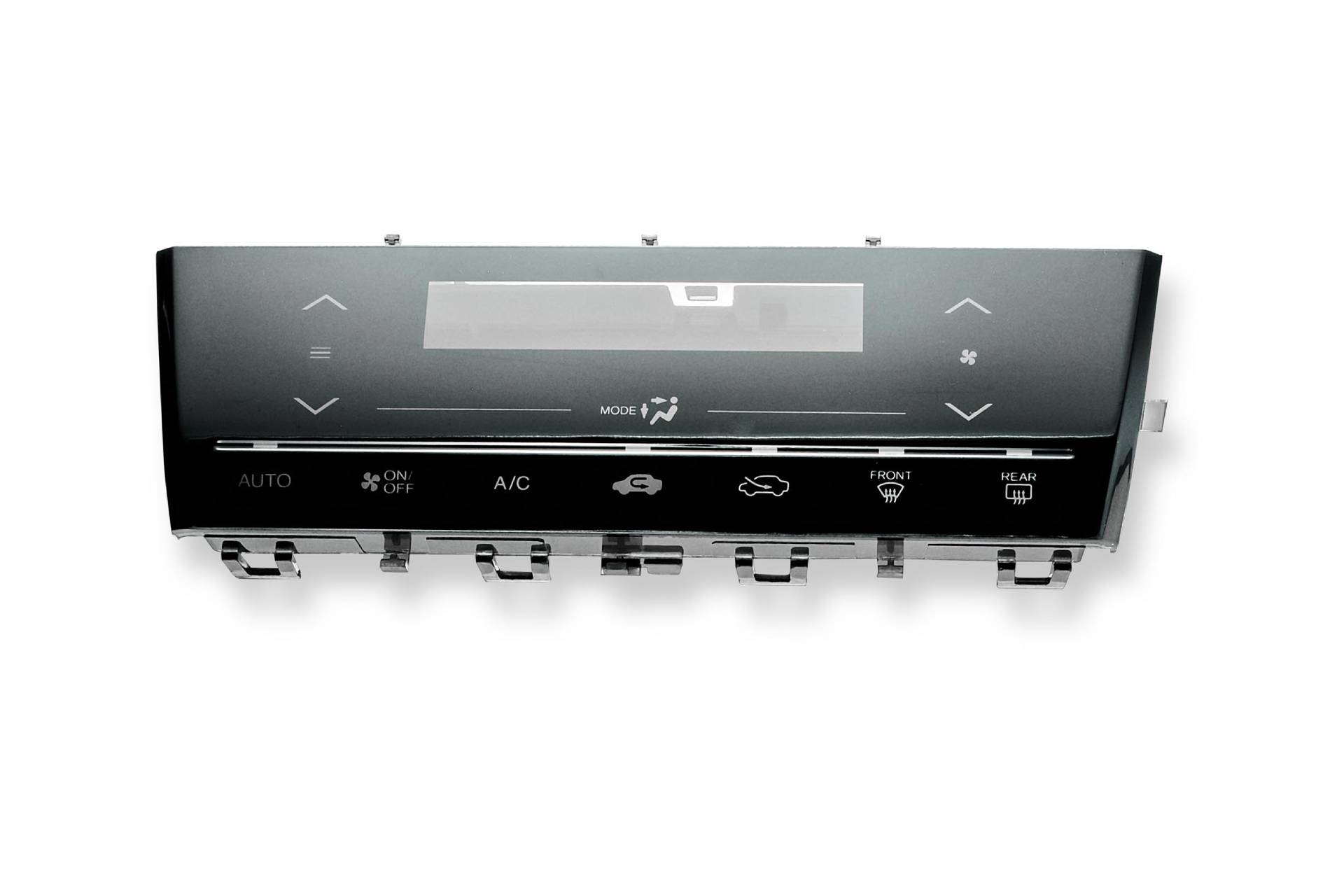A Comprehensive Guide to the Manufacturing and Processing of Rubber Keypads for Optimum Efficiency
The production and processing of rubber keypads play an essential function in their performance and use. Material choice, design precision, and advanced production techniques greatly influence their toughness and efficiency. Understanding these aspects is important for producing premium products. As different innovations emerge in this field, discovering their ramifications could reveal new standards for performance and individual experience. What vital aspects will shape the future of rubber keypads?
Understanding Rubber Keypads: Materials and Types
Rubber keypads are essential components in plenty of gadgets, supplying a balance of longevity and tactile responses. These keypads are mainly made from silicone or synthetic rubber, products picked for their versatility and durability. Silicone rubber, particularly, is favored for its exceptional temperature resistance and longevity, making it ideal for various applications, from customer electronics to industrial equipment.
There are numerous sorts of rubber keypads, including dome switch keypads, which use a dome-shaped system that provides tactile comments when pushed. Furthermore, there are also level keypads, which include a smooth surface and are usually made use of in push-button controls and medical tools. The selection of material and kind influences the keypad's efficiency, feel, and total individual experience. Understanding these aspects is important for suppliers and developers aiming to create reliable and reliable user interfaces in their products.
The Manufacturing Process: From Layout to Production
The manufacturing procedure of rubber keypads involves a number of important stages, beginning with layout and finishing with production. Designers create comprehensive specs and prototypes, guaranteeing the keypad meets useful and visual demands. Computer-aided design (CAD) software program is often made use of to imagine the format and features prior to continuing.
Once the layout is wrapped up, material choice is necessary, with options usually consisting of silicone or natural rubber. In the following phase, mold and mildews are developed based upon the authorized designs, which will form the keypads during manufacturing.
Complying with mold and mildew development, the production phase starts, where rubber is combined with ingredients to improve efficiency. The mix is after that put into molds and subjected to heat and pressure, allowing it to solidify and heal.
The finished keypads undergo quality checks to verify they satisfy established standards, adhered to by product packaging for distribution. This comprehensive process assurances peak efficiency in the end product.
Trick Techniques in Rubber Molding
In the domain of rubber keypads, different molding strategies play a critical function in establishing the top quality and performance of the end product. One prevalent approach is compression molding, where raw rubber is placed in a heated mold and stress is used, allowing for effective mass production and uniformity. Another considerable technique is injection molding, which involves infusing heated rubber right into a mold and mildew, offering higher accuracy and complicated shapes. Transfer molding, a hybrid of both methods, is also utilized, particularly for intricate designs, as it combines the benefits of both procedures. Furthermore, liquid silicone rubber (LSR) molding is getting grip as a result of its versatility and resilience, making it optimal for high-performance applications. Each method possesses special features, influencing factors such as cycle time, product waste, and manufacturing prices. Selecting the appropriate molding technique is crucial for attaining peak efficiency in rubber keypads.
Surface Finishing and Texturing Options
Surface ending up and texturing options play an important duty in boosting the responsive experience and visual appeal of rubber keypads. Suppliers use numerous methods to develop distinct surface area characteristics that influence user interaction and item style. Typical ending up techniques include matte, shiny, and satin finishes, each offering various visual impacts and hold levels. Texturing options, such as elevated patterns, grooves, or stippling, further enhance capability by enhancing traction and lowering slippage during usage.
Furthermore, specific textures can be tailored to satisfy ergonomic demands, supplying comfort during long term usage. The choice of surface area coatings and textures can be influenced by the intended application of the keypad, whether it be for customer electronic devices, automobile controls, or commercial gadgets. Inevitably, careful factor to consider of these options adds significantly to individual satisfaction and total product efficiency, making them crucial aspects in the design and manufacturing process of rubber keypads.
Quality Assurance Procedures in Rubber Keypad Production
Quality assurance procedures in rubber keypad production are crucial for making sure product dependability and performance. These procedures incorporate product selection criteria, rigorous testing treatments, and stringent final evaluation requirements. With each other, they create a complete structure that helps suppliers copyright top quality throughout the manufacturing procedure.

Product Choice Requirements
Selecting the proper materials for rubber keypads is important, as it directly influences their customer, sturdiness, and capability experience. Secret standards for material my link selection include tensile strength, resilience, and environmental resistance. The choice of rubber compound, such as silicone or polycarbonate elastomer (TPE), plays an important function in achieving wanted tactile feedback and durability. In addition, elements like chemical compatibility, temperature level stability, and UV resistance should be thought about to ensure optimal efficiency in various applications. Suppliers should likewise evaluate the convenience of processing and cost-effectiveness of products, balancing quality with budget constraints. Inevitably, the ideal product option not just improves the keypad's efficiency however likewise adds to total product top quality and customer contentment.
Testing Procedures Executed
After identifying the suitable products for rubber keypads, rigorous screening procedures are executed to verify that the final products satisfy market standards and consumer expectations. These treatments commonly include mechanical screening, which assesses the sturdiness and elasticity of the rubber under numerous problems. In addition, environmental screening analyzes the keypads' performance under temperature level variations, humidity, and exposure to chemicals. Electric screening verifies the keypads work properly with digital elements, verifying responsiveness and conductivity. Furthermore, tactile responses is assessed to assure individual satisfaction. These substantial testing measures are essential in determining any incongruities or defects before mass manufacturing, eventually improving the integrity and performance of rubber keypads in their desired applications.

Last Assessment Requirements
Thorough last inspection requirements are vital in rubber keypad production to ensure that each device fulfills the specified criteria for capability and look. This process normally entails visual evaluations to determine any surface area flaws, such as staining or imperfections. In addition, tactile examinations determine that the keypads react accurately to touch, keeping the required level of sensitivity. Longevity tests might likewise be performed, replicating extended use to confirm the longevity of the keypad under numerous problems. In addition, adherence to market policies and client requirements is validated to keep high quality guarantee. By carrying out these strenuous evaluation steps, producers can greatly reduce the danger of problems, guaranteeing that the last item is trusted and fulfills customer assumptions, eventually enhancing client fulfillment.
Innovations in Rubber Keypad Innovation
As innovation proceeds to develop, developments in rubber keypad technology are improving customer interfaces throughout numerous industries. One substantial improvement is the combination of capacitive touch sensors within rubber keypads, permitting an extra responsive and flexible individual experience. This modern technology allows individuals to interact with devices via touch, improving capability without compromising the responsive responses that rubber keypads are known for.
In addition, enhancements in product solutions have actually led to the development of top article even more durable, weather-resistant rubber, making keypads appropriate for outdoor and commercial usage. Enhanced printing techniques also permit high-resolution graphics and backlighting options, enhancing visibility and visual allure.

Moreover, improvements in manufacturing processes, such as 3D printing, are enabling personalized layouts and rapid prototyping, streamlining manufacturing timelines. These technologies jointly add to extra effective and user-friendly rubber keypads, guaranteeing they meet the demands of modern-day applications while preserving their core advantages.
Finest Practices for Layout and Capability
Creating reliable rubber keypads needs mindful assessment of both looks and functionality. Rubber Keypads. A well-designed keypad ought to balance ergonomic concepts with aesthetic interest enhance individual experience. Secret aspects include dimension, form, and spacing of switches, guaranteeing they are simple to press while protecting against unintended activation. Utilizing contrasting textures and colors can enhance visibility and responsive comments, aiding individuals in identifying in between tricks
Furthermore, the selection of materials plays an important function; top quality rubber substances can improve toughness and resistance to use. It is also essential to take right into account the assimilation of functions such as backlighting and customized graphics, which can boost functionality in numerous environments.
Ultimately, prototyping and individual testing are important in the layout process, allowing for adjustments based on real-world responses. By adhering to these ideal methods, producers can create rubber keypads that not just look attractive but additionally meet the practical demands of individuals efficiently.
Regularly Asked Concerns
How Do I Select the Right Rubber Material for My Keypad?
To choose the ideal rubber material for a keypad, one need to think about factors such as toughness, ecological resistance, responsive comments, and compatibility with the desired application, ensuring perfect performance and user fulfillment in numerous conditions.
What Are the Environmental Effects of Rubber Keypad Production?
Rubber keypad production can result in ecological impacts such as logging for natural rubber resources, pollution from chemical processes, and waste generation. Sustainable practices and materials can alleviate a few of these unfavorable results on ecosystems.
Can Rubber Keypads Be Recycled or Reused?
Rubber keypads can be recycled, but the process relies on the specific materials used in their production. Reusing them in different applications is additionally feasible, adding to squander decrease and promoting sustainability in making practices.
What Is the Average Life Expectancy of a Rubber Keypad?
The ordinary life-span see post of a rubber keypad generally varies from 5 to ten years, relying on use, environmental elements, and upkeep. Normal treatment can expand its performance, while excessive wear may shorten its toughness.
Are There Any Health Concerns Connected to Rubber Keypad Products?
There are possible health and wellness problems associated with rubber keypad products, consisting of allergies to certain chemicals and toxic irritants used in manufacturing. Correct handling and awareness of material make-up can reduce these dangers for individuals.
There are several types of rubber keypads, consisting of dome switch keypads, which utilize a dome-shaped device that gives tactile responses when pressed. Picking the appropriate products for rubber keypads is vital, as it straight impacts their toughness, functionality, and customer experience - Rubber Keypads. After figuring out the proper materials for rubber keypads, strenuous testing procedures are executed to verify that the final items satisfy industry requirements and client expectations. Rubber keypad production can lead to environmental impacts such as logging for natural rubber resources, pollution from chemical procedures, and waste generation. Rubber keypads can be recycled, however the procedure depends on the specific materials used in their production